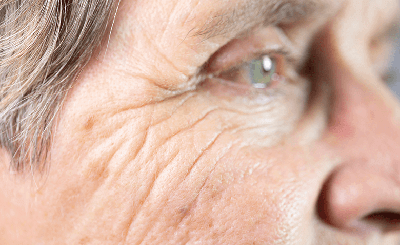5-aminolevulinic acid has long been used in Australia and overseas as a treatment for focal and field solar keratoses.
ALA Photodynamic Therapy for Actinic Keratoses - A Snapshot
- Aminolevulinic acid (ALA) is used as a photosensitiser in photodynamic therapy (PDT) for treating actinic keratoses (AKs).
- It is available commercially in the USA as Levulan Kerastick, but not in Australia, where it is instead compounded.
- ALA is absorbed preferentially by atypical keratinocytes, where it is metabolised to protoporphyrin IX, a photosensitiser.
- The treatment involves applying ALA to specific AK lesions or broader areas of sun-damaged skin (field damage) to treat clinical visible solar keratoses and prevent the potential development of in situ and invasive SCC.
- The cream is left to ‘incubate’ for a period of time before activation of the generated protoporphyrin IX by a variety of methods.
- Pre-treatment with salicylic acid or fractionated ablative lasers is sometimes utilised to increase penetration of ALA, although not usually required.
- ALA is activated using visible light sources, commonly involving either daylight or LED (red or blue wavelengths). It can also be activated using IPL and vascular lasers.
- Activation of protoporphyrin IX promotes the production of reactive oxygen species that destroy atypical cells in the skin.
- The therapy is valued for its decreased downtime compared to traditional topical treatments, its cosmetic outcomes and patient satisfaction.
DAYLIGHT PDT WITH ALA
- Activation of ALA with Daylight is a popular option as it requires no specific in-clinic devices. It involves application of a chemical sunscreen (without the physical sunscreens titanium dioxide or zinc oxide which would otherwise block the visible spectrum of daylight), preparing the skin by gently curetting hyperkeratotic lesions (without the need for anaesthesia), application of ALA to treatment area (usually whole face +/- scalp), followed by exposure to natural outdoor daylight within 30 mins of ALA application, for a period of up to 2 hours.
- Patients typically experience a sensation of warmth, tingling and sometimes burning in the treated area. This is typically followed by an inflammatory reaction that peaks at 24 to 48 hours and usually resolves by day 7 to 10. The intensity of the reaction can vary depending on the severity and grade of the field actinic damage, the area treated (face more reactive than scalp), and the intensity of the light exposure during treatment (cloudy vs sunny days).
- The following article provides further information.
Farberg AS, Marson JW, Soleymani T. Advances in Photodynamic Therapy for the Treatment of Actinic Keratosis and Nonmelanoma Skin Cancer: A Narrative Review. Dermatol Ther (Heidelb). 2023 Mar;13(3):689-716. doi: 10.1007/s13555-023-00888-1. Epub 2023 Jan 20. PMID: 36662422; PMCID: PMC9984667.



 Subantimicrobial Dosing of Doxycycline for Acne and Rosacea
Subantimicrobial Dosing of Doxycycline for Acne and Rosacea Hydroquinone for Melasma
Hydroquinone for Melasma Topical Tacrolimus
Topical Tacrolimus ALA Photodynamic Therapy for Actinic Keratoses
ALA Photodynamic Therapy for Actinic Keratoses

